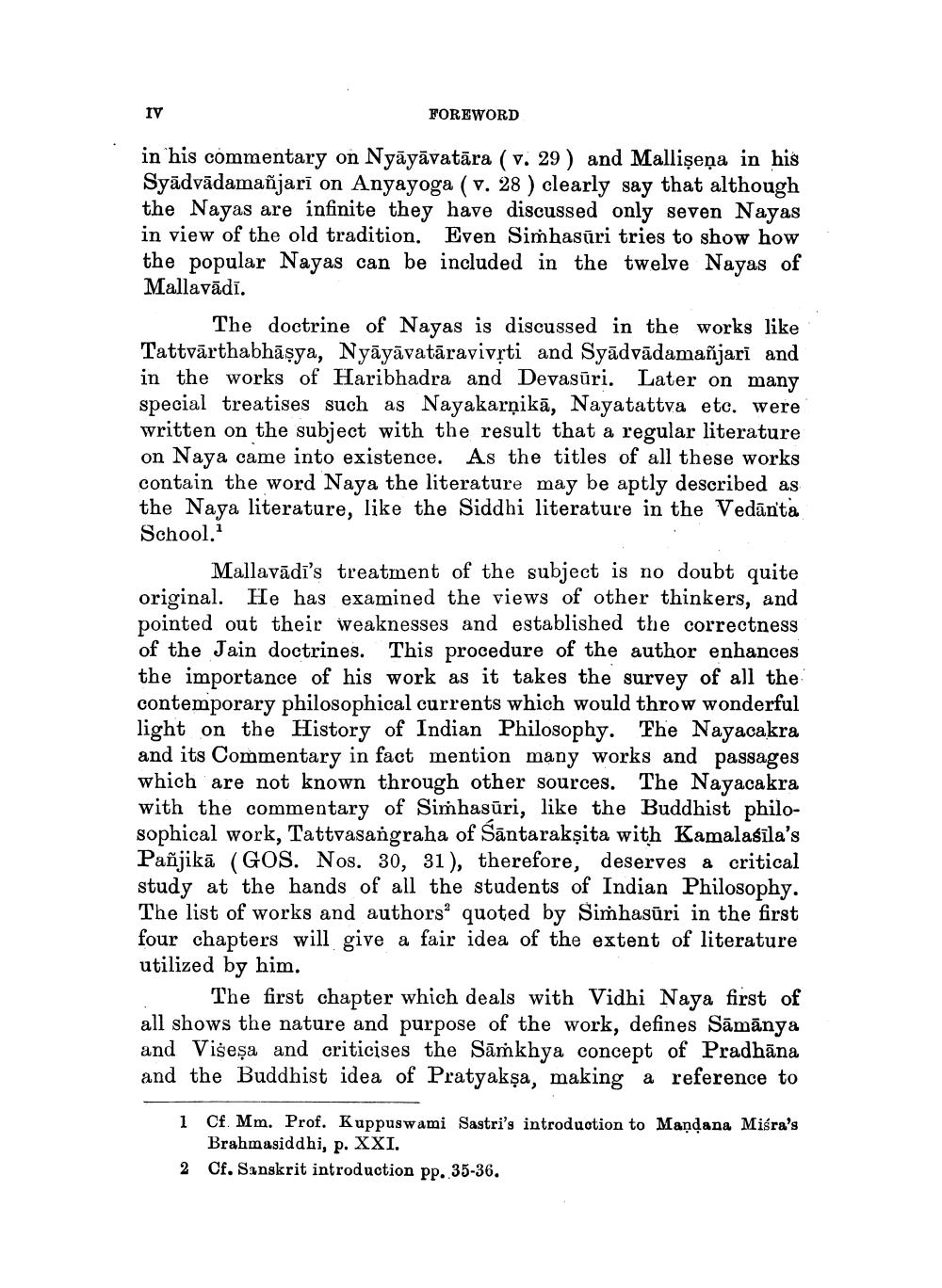________________ IV FOREWORD in his commentary on Nyayavatara (v. 29 ) and Mallisena in his Syadvadamanjari on Anyayoga (v. 28 ) clearly say that although the Nayas are infinite they have discussed only seven Nayas in view of the old tradition. Even Simhasuri tries to show how the popular Nayas can be included in the twelve Nayas of Mallavadi. The doctrine of Nayas is discussed in the works like Tattvarthabhasya, Nyayavataravivrti and Syadvadamanjari and in the works of Haribhadra and Devasuri. Later on many special treatises such as Nayakarnika, Nayatattva etc. were written on the subject with the result that a regular literature on Naya came into existence. As the titles of all these works contain the word Naya the literature may be aptly described as the Naya literature, like the Siddhi literature in the Vedanta School.' Mallavadi's treatment of the subject is no doubt quite original. He has examined the views of other thinkers, and pointed out their weaknesses and established the correctness of the Jain doctrines. This procedure of the author enhances the importance of his work as it takes the survey of all the contemporary philosophical currents which would throw wonderful light on the History of Indian Philosophy. The Nayacakra and its Commentary in fact mention many works and passages which are not known through other sources. The Nayacakra with the commentary of Simhasuri, like the Buddhist philosophical work, Tattvasangraha of Santaraksita with Kamalasila's Panjika (GOS. Nos. 30, 31), therefore, deserves a critical study at the hands of all the students of Indian Philosophy. The list of works and authors quoted by Simhasuri in the first four chapters will give a fair idea of the extent of literature utilized by him. The first chapter which deals with Vidhi Naya first of all shows the nature and purpose of the work, defines Samanya and Visesa and criticises the Samkhya concept of Pradhana and the Buddhist idea of Pratyaksa, making a reference to 1 Cf. Mm. Prof. Kuppuswami Sastri's introduction to Mandana Misra's Brahmasiddhi, p. XXI. 2 Cf. Sanskrit introduction pp. 35-36.




